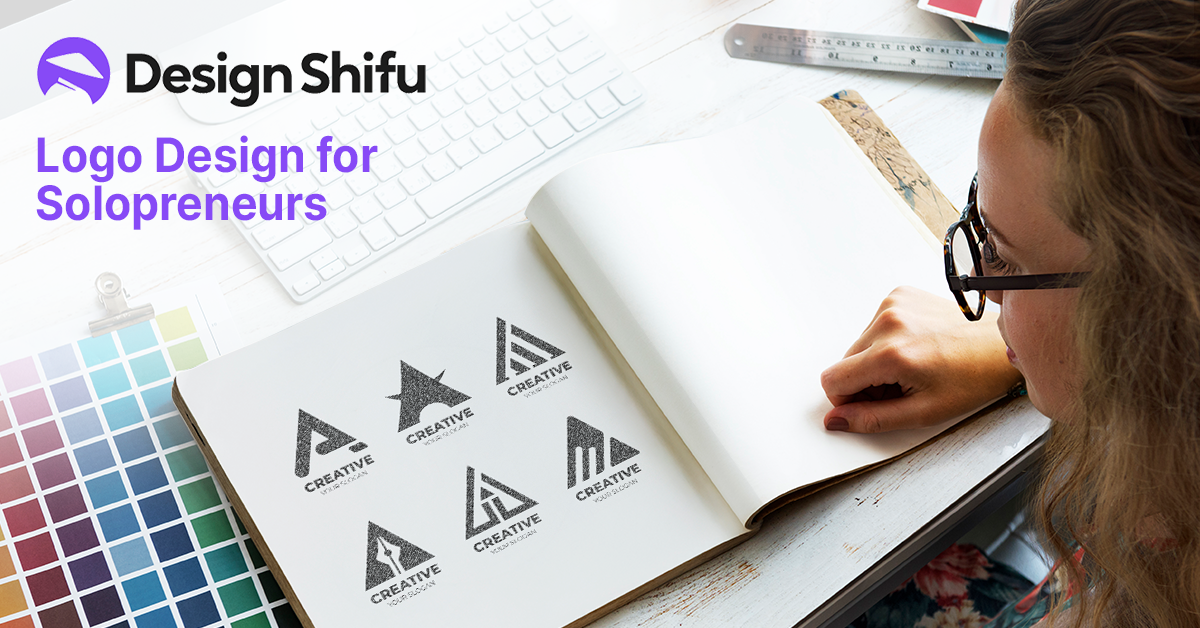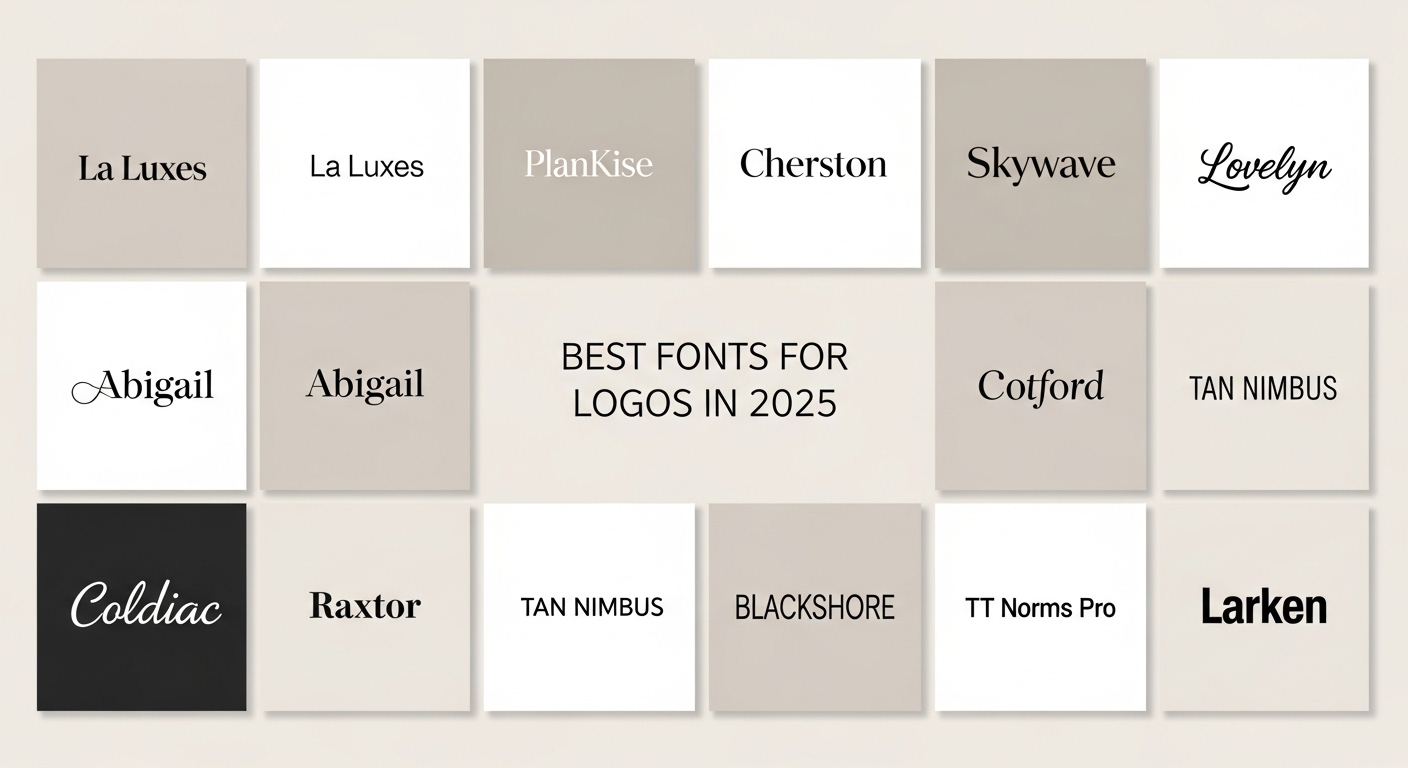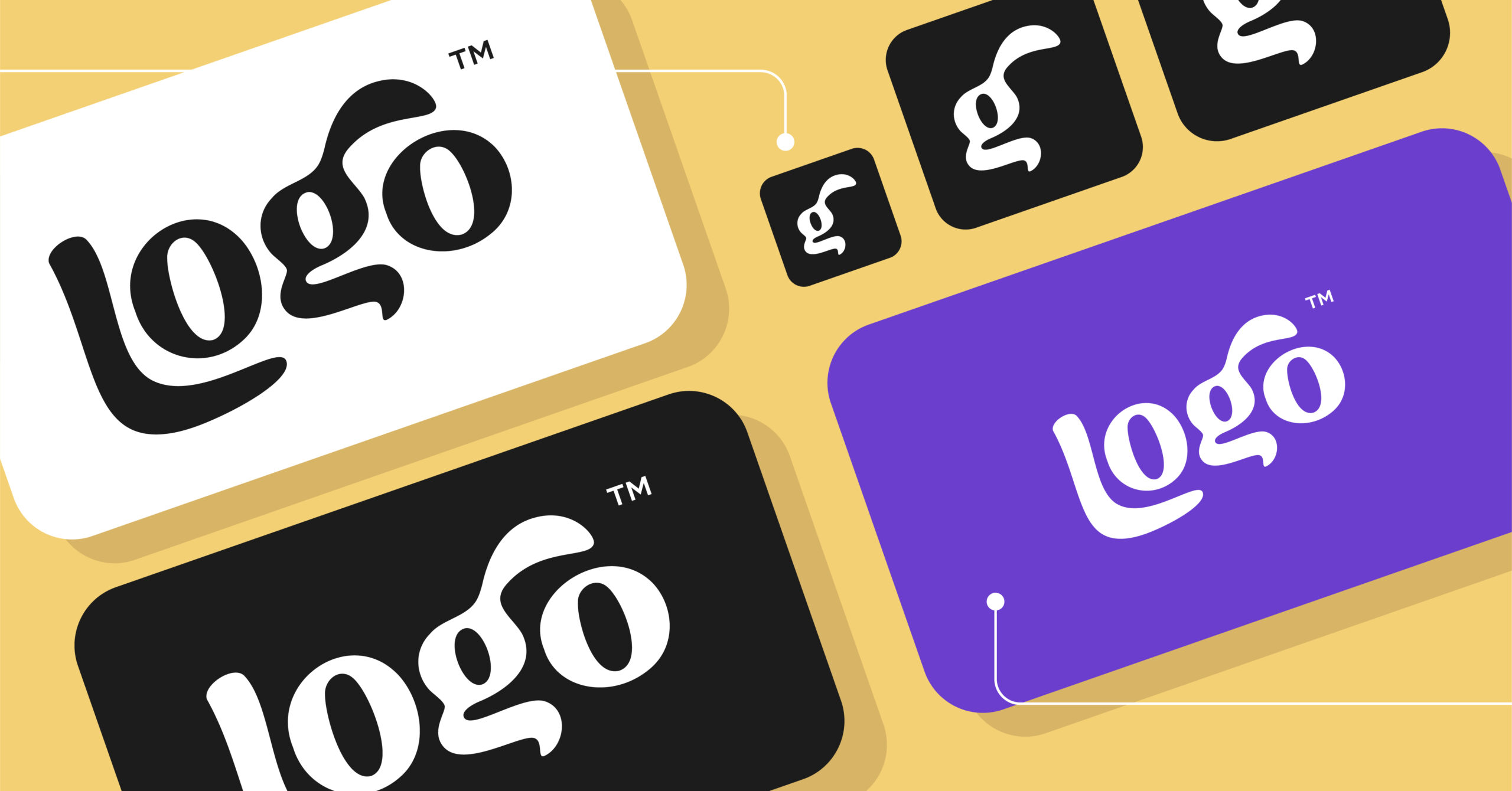As a solopreneur, your logo isn’t just a pretty graphic, it’s your first impression, credibility booster, and silent sales rep. It acts as your business card, storefront, and handshake all rolled into one.
Did you know?
- Studies show that up to 75% of consumers form judgments about a brand’s credibility based on its logo and visual identity
- Consistent visual branding, including your logo, can boost brand recognition by up to 80% (Marq).
- Professionally branded startups tend to attract significantly more customers some report up to 50% higher conversion after rebranding (99designs case studies)
Your logo tells people who you are, what you do, and why they should trust you, all in a split second. That’s why investing in a logo that reflects your values and resonates with your audience isn’t just design, it’s strategy.
And here’s the best part, You don’t need a big budget to get a killer logo just the right approach. This guide shows how to craft a logo that sells your brand in seconds.
TL;DR
Our logo is more than a visual it’s your brand’s first handshake. As a solopreneur, you can build a standout identity without breaking the bank. This guide helps you:
- Define your brand’s voice and personality
- Pick a logo style that fits your niche
- Choose the best design route (DIY, freelancer, or kits)
- Use your logo effectively across platforms
- Avoid common design mistakes that weaken impact
Your logo is your brand’s MVP build it smart, scale it strong.
Define Your Brand Personality Before You Design
Before jumping into design tools, you need clarity on your brand foundation.
Ask yourself
- What makes my business unique?
- Who is my ideal customer?
- What emotions do I want my logo to evoke?
- What are my core values?
- How do I want to be perceived in my industry?
Brand Personality Examples
- Coaching business? → Warm, approachable, trustworthy (soft colors, handwritten fonts)
- Tech consultant? → Clean, modern, innovative (sans-serif fonts, geometric shapes)
- Creative services? → Bold, artistic, unique (custom lettering, vibrant colors)
- Financial advisor? → Professional, stable, reliable (serif fonts, blue/green colors)
Choose Your Logo Style (5 Styles That Work Best for Solopreneurs)
| Style | Best For | Pros | Cons | Example Approach |
| Wordmark | Personal brands, consultants | Easy to remember, professional | Requires unique typography | Your name in custom font styling |
| Lettermark/Monogram | Long business names, personal brands | Clean, works great as avatar | Needs brand recognition to work alone | “JS” for “Jane Smith Consulting” |
| Icon + Text (Combination) | Most solopreneurs (recommended) | Versatile, memorable, flexible usage | More complex to design well | Simple icon paired with business name |
| Symbol/Icon Only | Established brands, creative fields | Highly memorable, modern | Requires strong brand recognition | Distinctive symbol that represents your service |
| Minimalist | Modern, professional services | Timeless, scalable, sophisticated | Can appear generic if not unique | Single geometric shape + clean typography |
Pro Tip: Start with combination marks (icon + text) as they offer the most flexibility for growing solopreneurs.
Key Design Principles for Solopreneur Success
Simplicity is Power
- Keep it clean and uncluttered
- Ensure it works at small sizes (social media avatars, business cards)
- Remember: simple doesn’t mean boring
- Pass the “squint test” – can you identify it from across the room?
Color Psychology for Solopreneurs
| Color | Psychology | Great For |
| Blue | Trust, professionalism, stability | Finance, consulting, healthcare, tech |
| Green | Growth, harmony, freshness | Sustainability, wellness, finance, coaching |
| Red | Energy, passion, urgency | Marketing, fitness, food, entertainment |
| Orange | Enthusiasm, creativity, friendliness | Creative services, coaching, retail |
| Purple | Luxury, creativity, wisdom | Beauty, coaching, creative services |
| Black | Sophistication, authority, premium | Luxury services, design, photography |
| Gray | Balance, neutrality, professionalism | Technology, consulting, architecture |
Pro Tip: Start with one primary color + black/white to keep it simple and versatile.
Typography Considerations
Serif Fonts (Traditional, trustworthy)
- Good for: Law, finance, publishing, luxury services
Sans-Serif Fonts (Modern, clean, approachable)
- Good for: Tech, design, consulting, most modern businesses
Script Fonts (Personal, elegant, creative)
- Good for: Beauty, wedding services, artisanal products
- Use sparingly and ensure readability
Versatility Requirements
Your logo must work effectively:
- In color and black & white
- On light and dark backgrounds
- At various sizes (favicon to billboard)
- Across digital and print media
Choose a Logo Design Path (Options for Every Budget)
DIY with Free Tools ($0 – $50)
Best for: Bootstrapped solopreneurs who want full control.
Hire a Freelancer ($100 – $500)
Best for: Those who want a custom logo without agency prices.
Use a Branding Kit ($20 – $200)
- Creative Market (pre-made logo templates)
- Etsy (customizable designs)
Best for: Quick, affordable, and unique logos.
Need unlimited, professional logo variations and updates? Explore Design Shifu’s design plans perfect for solopreneurs
Where to Use Your Logo for Maximum Impact
Don’t let your logo collect dust! Strategic placement builds brand recognition
Digital Presence
- Website header and favicon
- Social media profiles and covers
- Email signatures
- Digital business cards
- Online portfolios and LinkedIn
- Zoom backgrounds and presentations
Print Materials
- Business cards and letterhead
- Invoices and proposals (looks more professional)
- Marketing materials and brochures
- Packaging and shipping materials
Promotional Items
- Branded merchandise (stickers, notebooks, etc.)
- Trade show materials
- Apparel for events
File Formats You Need
- PNG (transparent background, web use)
- SVG (scalable vector for web)
- EPS/AI (professional printing)
- JPG (general use, email)
- PDF (presentations, professional documents)
Sizes to Create
- Large: 5000px wide (large format printing)
- Medium: 1000px wide (most digital uses)
- Small: 200px wide (favicons, small applications)
- Square versions: Social media profiles
Once your logo is ready, use it consistently by building a simple brand guideline. Here’s our guide to brand guidelines for startup founders
10 Logo Mistakes Solopreneurs Make (And How to Avoid Them)
Design Mistakes
- Using generic stock icons (e.g., a globe for “consulting”)
- Too many colors/fonts (stick to 1-2 fonts maximum)
- Making it too complex or detailed
- Following trends too closely (they become dated quickly)
- Using low-resolution raster images instead of vectors
Strategic Mistakes
- Not testing in black & white (must work everywhere)
- Copying competitors too closely (be unique!)
- Not considering your target audience
- Forgetting about scalability (how it looks at small sizes)
- Skipping vector files (SVG/EPS essential for professional use)
Advanced Tips for Logo Success
The Logo Testing Process
- The Squint Test: Squint at your logo from across the room. Can you still make out the key elements?
- The Size Test: View your logo at business card size. Is it still readable and impactful?
- The Versatility Test: Try your logo on different colored backgrounds, in black and white, and in various contexts.
- The Memory Test: Show your logo to someone for 5 seconds, then ask them to describe it. What they remember is what’s truly impactful.
Think Long-Term: Logo Evolution Strategy
Your logo should grow with your business
- Simple, professional design that establishes credibility
- Refinements based on market feedback and business growth
- Potential rebrand as you scale or pivot
Remember: Evolution, not revolution. Sudden, dramatic changes can confuse your existing audience
Protecting Your Logo Investment
Once you’ve designed your logo, it’s time to protect it. Consider registering a trademark to secure exclusive rights, especially if your design is unique and central to your business identity.
Make sure it doesn’t infringe on existing trademarks, and keep documentation of the design process for legal backup. Even as a solopreneur, it’s smart to create simple brand guidelines specify color codes, minimum size, spacing, font use, and what not to do with your logo.
If your business relies on visual appeal or you’re launching a premium product, hiring a professional designer (budget $500–$5,000+) may be a wise investment especially if you lack the time or skills to design something truly distinctive.
Conclusion
Your logo isn’t just a designbit’s your entire brand’s handshake. As a solopreneur, creating a logo that’s clear, consistent, and intentional sets the tone for how your audience perceives and trusts you.
With the right tools, even a small budget can build a bold brand presence. Keep it simple, make it scalable, and own your visual identity from day one.
Frequently Asked Questions
1. How much should a solopreneur spend on a logo?
A: $0-$500 for most solopreneurs. Start with $0-$100 (DIY or basic freelance), then invest more as you scale and generate revenue.
2. Can I change my logo later?
A: Yes, but rebranding costs more in terms of updating materials and potential customer confusion. Choose wisely from the start.
3. Should I trademark my logo?
A: Consider it if your logo is highly distinctive and central to your brand identity. Consult with an IP attorney for guidance.
4. How do I know if my logo is working?
A: Track metrics like brand recognition, website engagement, and customer feedback. A good logo should feel “right” and get positive responses.
5. What if I hate my logo after a few months?
A: Minor tweaks are normal, but major changes should be carefully considered. Get feedback from trusted colleagues and clients before making big changes.





